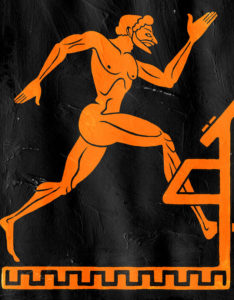Today’s gyms, which depend on our vanity and body envy, are a far cry from what the Greeks envisioned

ILLUSTRATION: THOMAS FUCHS
Going to the gym takes on a special urgency at this time of year, as we prepare to put our bodies on display at the pool and beach. Though the desire to live a virtuous life of fitness no doubt plays its part, vanity and body envy are, I suspect, the main motivation for our seasonal exertions.
The ancient Greeks, who invented gyms (the Greek gymnasion means “school for naked exercise”), were also body-conscious, but they saw a deeper point to the sweat. No mere muscle shops, Greek gymnasia were state-sponsored institutions aimed at training young men to embody, literally, the highest ideals of Greek virtue. In Plato’s “The Republic,” Socrates says that the two branches of physical and academic education “seem to have been given by some god to men…to ensure a proper harmony between energy and initiative on the one hand and reason on the other, by tuning each to the right pitch.”
Physical competition, culminating in the Olympics, was a form of patriotic activity, and young men went to the gym to socialize, bathe and learn to think. Aristotle founded his school of philosophy in the Lyceum, in a gymnasium that included physical training.





